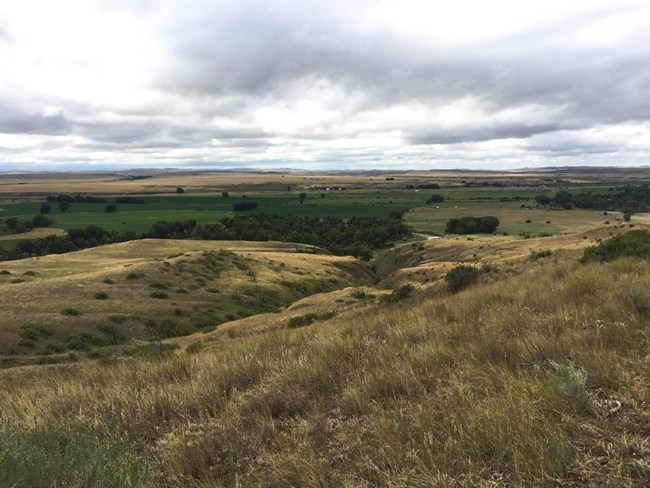Learn about NRCAs
The Natural Resource Condition Assessment (NRCA) Program provides framework, funding, and publishing support to parks to aid in the synthesis and documentation of natural resource conditions. Condition assessment reports are a tool to describe selected park resources, and record a snapshot of their current condition, identify trends, and identify potential or current threats and stressors. Understanding the condition and trend of natural resources is key for parks and NPS planners to appropriately prioritize and allocate stewardship resources.

NPS Photo.
In addition to battlefields and memorials, the monument is an ecosystem composed of a variety of species - birds, mammals, reptiles, and amphibians - native to southeastern Montana.
Traditional NRCA Report: 2014
In an effort to better understand the natural resources and processes found within the monument, a Natural Resource Condition Assessment was conducted and published in 2014. This assessment was a collaborative effort between the National Park Service, Utah State University, Northern Rockies Conservation Cooperative, and the University of West Florida. This team chose 11 natural resource topics to be evaluated:
- Viewshed |
- Geology |
|||||
- Night sky |
- Stream ecological integrity |
|||||
- Soundscape |
- Groundwater |
|||||
- Air Quality |
- Riparian habitat |
|||||
- Grasslands |
- Breeding landbirds |
|||||
- Exotic plants |
Natural resource conditions at the park varied. The landscape scale resources chosen for this assessment included viewshed, night sky, and soundscape. Overall, these resources are in moderate condition, with the exception of the viewshed, which is considered to be good-moderate. The monument’s supporting physical environment resource topics included air quality, geology, stream ecological integrity, and groundwater. Geology and groundwater are lacking specific data to provide insight into current condition and trend at the monument. Air quality warranted moderate concern; whereas total sulfur is in good condition. The stream ecological integrity warranted an overall good condition. The resource topics related to vegetation included riparian habitat, grasslands, and exotic plants. Riparian habitat was in good condition, and grasslands and exotic plants were both in moderate condition. Finally, the wildlife resource topics included only landbirds; the overall condition for landbirds is good.
Human activities/developments occurring either within the monument or nearby, but outside of the monument’s boundaries (e.g., interstates/highways, and congested parking lots), are contributing to views, night-time light pollution, and noises that are not consistent with the monument’s visitor goal of creating contemplative areas.
Human activities/developments occurring either within the monument or nearby, but outside of the monument’s boundaries (e.g., interstates/highways, and congested parking lots), are contributing to views, night-time light pollution, and noises that are not consistent with the monument’s visitor goal of creating contemplative areas.
For other reports and natural resource datasets visit the NPS Data Store.
Source: NPS DataStore Collection 7765 (results presented are a subset). To search for additional information, visit the NPS DataStore.
Last updated: February 25, 2022
